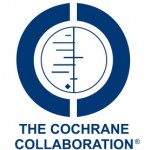
Third molars (wisdom teeth) generally erupt between the ages of 17-24 years. Often they fail to erupt or only erupt partially. When they do not reach their normal functional position they are considered to be impacted, this can be due to lack of space, obstruction by another tooth, or development in an abnormal position. An impacted wisdom tooth is called trouble-free ,(disease free or asymptomatic) if the patient does not experience signs or symptoms of pain or discomfort associated with it.The prevalence of asymptomatic impacted third molars varies widely but is more common in the lower jaw.
The aim of this Cochrane review update was to evaluate the effects of prophylactic removal of asymptomatic impacted wisdom teeth in adolescents and adults compared with the retention (conservative management) of these wisdom teeth.
What did they do
A wide range of databases was searched Cochrane Oral Health Group’s Trials Register , the Cochrane Central Register of Controlled Trials (CENTRAL) , Medline, and Embase with no language restrictions. All randomised controlled trials (RCTs) on adolescents and adults comparing the effect of prophylactic removal of asymptomatic impacted wisdom teeth with no-treatment (retention) were to be considered. The usual robust Cochrane methodological approaches were followed.
What did they find
- No RCTs were identified that compared the removal of asymptomatic wisdom teeth with retention and reported quality of life.
- On eRCT on adolescents was identified that compared the removal of impacted mandibular wisdom teeth with retention and only examined the effect on late lower incisor crowding. This study at high risk of bias provided no evidence that extraction of wisdom teeth had an effect on lower incisor crowding over 5 years.
The authors concluded
Insufficient evidence was found to support or refute routine prophylactic removal of asymptomatic impacted wisdom teeth in adults. A single trial comparing removal versus retention found no evidence of a difference on late lower incisor crowding at 5 years, however no other relevant outcomes were measured. Watchful monitoring of asymptomatic third molar teeth may be a more prudent strategy.
Mettes TG, Ghaeminia H, Nienhuijs MEL, Perry J, van der Sanden WJM, Plasschaert A. Surgical removal versus retention for the management of asymptomatic impacted wisdom teeth. Cochrane Database of Systematic Reviews 2012, Issue 6. Art.No.: CD003879.
Comment
Considering that ongoing disagreement regarding to the prophylactic removal it is disappointing that no robust trials have been conducted to address the this question. Both the Scottish Intercollegiate Guideline Network (SIGN) and NICE guidelines on unerupted third molars concluded that based on the costs and risks there was no valid evidence to support the prophylactic removal of asymptomatic wisdom teeth.
The authors noted in their discussions that there have been:-
large studies documenting the incidence of complications associated with the retention of symptomatic wisdom teeth, and attempting to identify the risk factors associated with poor outcomes following either extraction or retention. There are issues of selection bias and confounding in all these studies.
and note that the key question remains
why should impacted wisdom teeth be removed in the absence of symptoms or pathological conditions?

Hi Dr. Richards,
Thanks so much for your informative website. I have been doing extensive research on wisdom teeth removal and their relation to facial esthetics and have come to a similar conclusion, they actually cause more harm when taken out. I had mine taken out 5 years ago, at the age of 19, and since then think I have noticed slight facial changes. Specifically, a narrowing of the lower jaw and less pronounced cheeks. I’m wondering if in your opinion, dental implants could help remedy these changes? I know they provide esthetic benefits when put in the 2nd molar region so I’m guessing the same would be true with 3rd molars? Thanks so much in advance for your time and expertise.